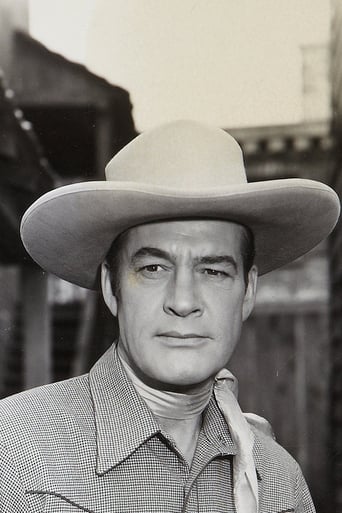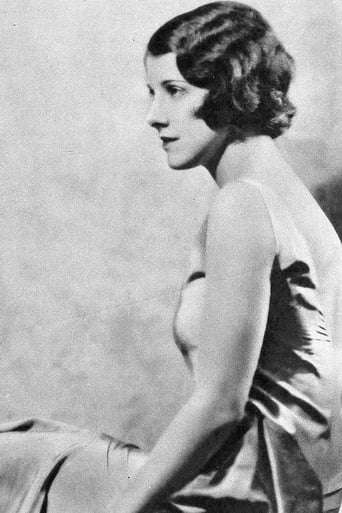NekoHomey
Purely Joyful Movie!
Derrick Gibbons
An old-fashioned movie made with new-fashioned finesse.
Kirandeep Yoder
The joyful confection is coated in a sparkly gloss, bright enough to gleam from the darkest, most cynical corners.
MartinHafer
"The Viking" is a very important movie. It was, according to IMDb, the first Canadian* talking picture. It also has the infamous distinction of having the most crew members killed in the production of the film! Apart from all this, it has lots of amazing footage of the frozen North. However, unfortunately, it also is an incredibly dull film and is very dated--particularly when it comes to the sound quality.The film begins with Luke (Charles Starrett) being discovered by Jed (Arther Vinton) freezing to death in the snow, so he brings Luke back to town and saves him. However, soon the film looks like a Popeye cartoon**, as both guys want the same girl and Jed sure looks and acts a lot like Bluto! So, when the two guys go off to sea later on a sea hunting expedition***, you KNOW that sooner or later, the pair will end up beating the snot out of each other to win the hand of Mary Joe. Unfortunately, in the interim, there is snow, snow, snow and more snow--as well as footage of the expedition. It's MILDLY interesting from a historical standpoint but dramatically, it's deadly dull. How will it all end? And, more importantly, will you even care?! I sure know I didn't. And, it's a shame so many people died to make such a dull film.*Although the production was Canadian and it was filmed in Canada, it's odd that all three of the leads were Americans.**Yes, I know that the first Popeye cartoon did not appear until two years later. It just SEEMED a lot like Popeye and I think having Luke pop out a can of spinach and wailing on Jed would have been a billion times better than the way the film really went.***Yes, seal hunting isn't politically correct and PETA-types will no doubt be offended. But it was 1931, dang it!
drednm
This 1931 film is the first talkie produced in Canada. The sound is just plain awful. About half the dialog is impossible to decipher, but that's not a bad thing since the dialog is awful anyway.This Canadian film, shot in Newfoundland and Labrador, stars Charles Starrett (the future cowboy star) as bad luck Luke, who sails on "The Viking" on a seal-hunting expedition. His rival and enemy (Arthur Vinton) does everything he can to make the voyage a misery. They are rivals for the hand of Mary Jo (Louise Huntington). The love story is not well done and we've seen it a hundred times before.What is remarkable about this film is the location shooting among the ice floes and bergs. The film takes on a documentary feel as we watch the men battle the ice, scamper across the floes, and wander for miles searching for seals. The plot finally gets interesting after the seal slaughter when the two men are left behind and the ship sails for home. They then have to battle the elements as they walk back to St. Johns.The film was co-directed by veteran George Melford and young Varick Frissell in his only feature film. The cinematography is grainy but is so astonishing, THE VIKING was mentioned in Kevin Brownlow's masterpiece Hollywood.
maksquibs
A DVD combo-pack on adventurer/photographer Varick Frissell, who died in an explosion on the eponymous seal hunting ship. WHITE THUNDER is a bio that barely lives up to its fascinating subject, but nicely sets up the paired early talkie. THE VIKING is officially directed by George Melford, an A-list silent director who faded fast with sound (his swansong, EAST OF BORNEO/''31, is an unintentional riot). But Frissell must have taken charge of all the Newfoundland location shooting which is so filled with extraordinary footage of sealers, churning ice floes, full-rigged ships, sea & sun that you'd gladly put up with twice the cornball "two guys & a gal" hokum so mechanically delivered by the talent-challenged cast.
kamerad
As the first Canadian sound film, "The Viking", is one of the most important films in the history of Canadian Cinema. That's kind of ironic considering that it was shot in Newfoundland (then owned by Britain) with an American cast and an American crew. Sure the producer, writer, and co-director Varick Frissell spent a lot of time in Canada, but he was still an American. So why does this film feel so Canadian? Well it's badly acted, thinly plotted, yet beautifully photographed. What could be more Canadian than that? Ok, ok not all Canadian films are that bad, but "The Viking is". That's not Frissell's fault, he fought to keep out the love/jealousy story that ruins the film. But all joking aside, I think the reason "The Viking" feels so Canadian (even to us Canadians) is unfortunately because it has all the stereotypes of our country that American audiences expect: cold, barren landscapes, lots of snow, and rugged, but jovial people.
"The Viking" is kind of a testament the hold America has over us. Even though we know that Canada is not like that all year round, we buy into the fact when we see it on the screen. Although Newfoundland winters are exactly as shown in the movie, (American) audiences will not understand that it is only in the winter time when things look like this. The film can't be faulted entirely though. Like I mentioned before, it is stunningly photographed, and without the current story, and with more emphasis on the seal hunting (the way Frissell intended), it could have been a very good film. One that I would have been glad to call Canadian no matter where it came from.

